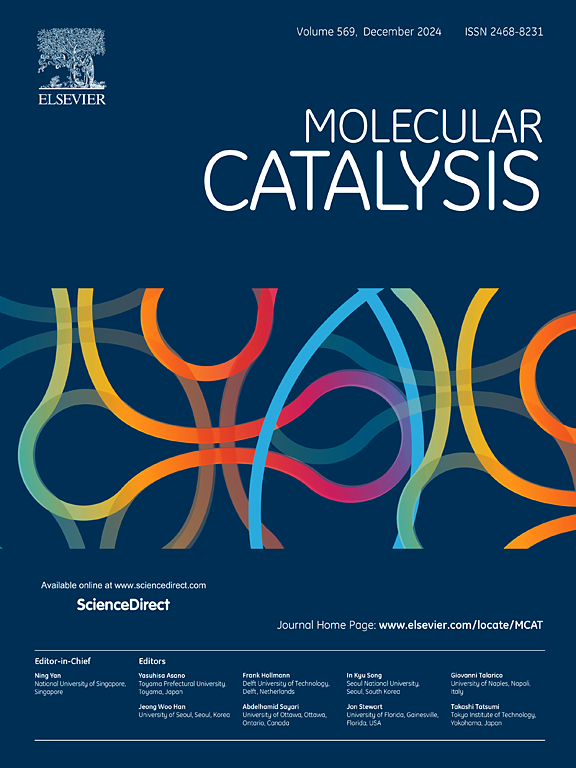Construction of BiOBr nanosheets and oxygen vacancy-rich TiNS heterojunction for efficient photothermal CO2 reduction
IF 3.9
2区 化学
Q2 CHEMISTRY, PHYSICAL
引用次数: 0
Abstract
Utilizing water as an electron donor for the artificial CO2 photoreduction into valuable chemicals presents a promising way to partially address energy challenges and achieve carbon neutrality. Syngas (CO and H2) is an ideal platform for synthesizing hydrocarbons and carbonyl compounds, etc., and it can be synthesized from CO2 reduction. Recently, photothermal catalysis combines the advantages of photocatalysis and thermal catalysis, which is a promising approach to achieving the reaction under relatively mild conditions. In the present work, a catalyst, comprised of titanate nanosheets (TiNS) and BiOBr (BOB), was feasibly prepared and used for photothermal CO2 reduction, in which water serves as the electron donor. The catalyst delivered CO and H2 yields of 168 μmol·gcat−1·h−1 and 219 μmol·gcat−1·h−1. Notably, the CO yield is 9 times higher than TiNS and 3 times higher than BiOBr alone. Experimental studies and theoretical calculations indicated that the introduction of oxygen vacancies in TiNS significantly provided more active sites for the adsorption and activation of CO2, while also reducing the energy barrier of the rate-determining step in the CO2-to-CO reduction. Typically, the 50 wt% BOB/TiNS catalyst exhibited strong adsorption and activation of CO2 and showed a low barrier for the rate-determining step in the titled reduction. Consequently, the photothermal catalytic CO2 conversion performance was significantly improved, offering a rational design concept for the photothermal catalytic CO2 reduction to produce syngas.

求助全文
约1分钟内获得全文
求助全文
来源期刊

Molecular Catalysis
Chemical Engineering-Process Chemistry and Technology
CiteScore
6.90
自引率
10.90%
发文量
700
审稿时长
40 days
期刊介绍:
Molecular Catalysis publishes full papers that are original, rigorous, and scholarly contributions examining the molecular and atomic aspects of catalytic activation and reaction mechanisms. The fields covered are:
Heterogeneous catalysis including immobilized molecular catalysts
Homogeneous catalysis including organocatalysis, organometallic catalysis and biocatalysis
Photo- and electrochemistry
Theoretical aspects of catalysis analyzed by computational methods
 求助内容:
求助内容: 应助结果提醒方式:
应助结果提醒方式:


